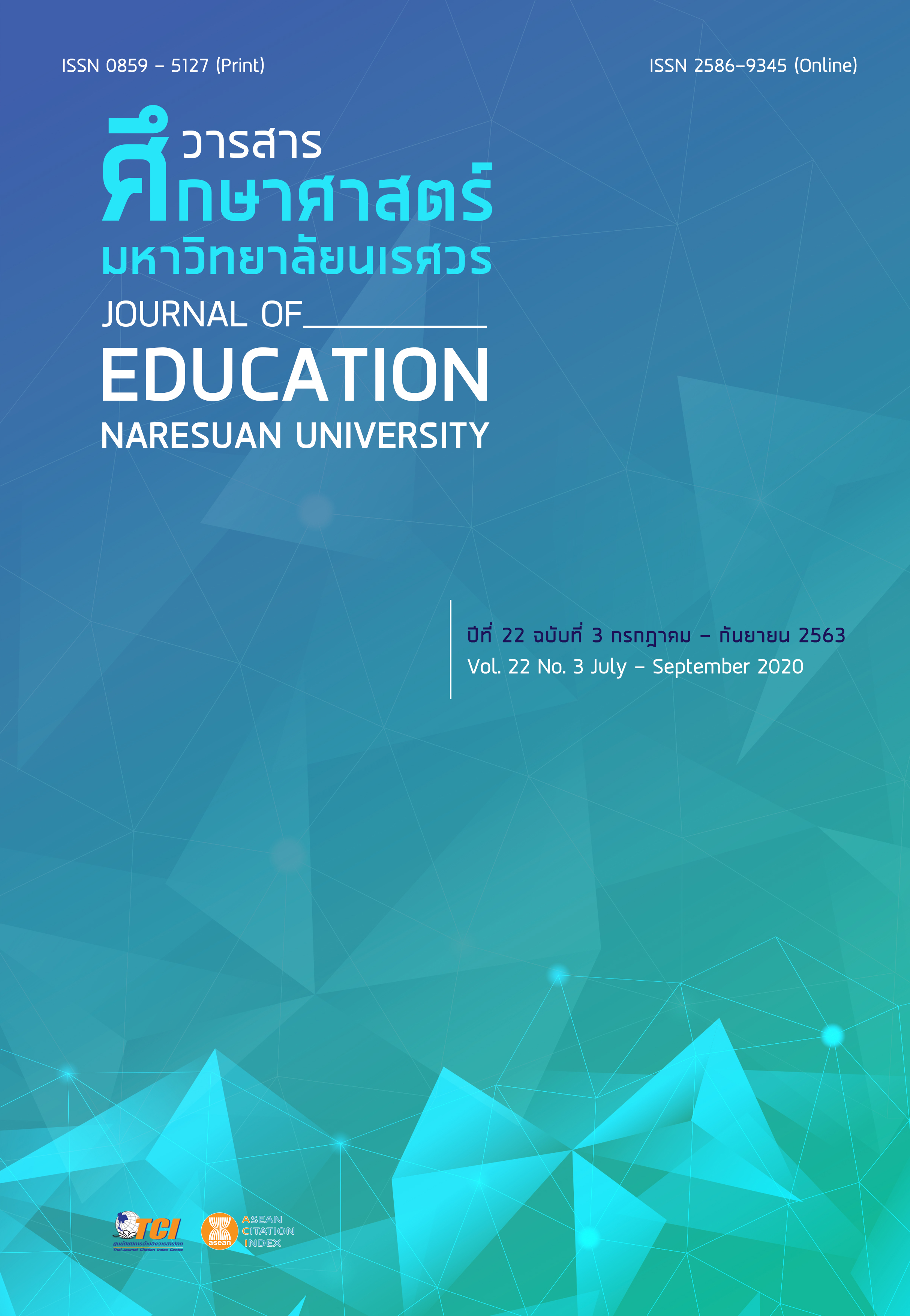CONSTRUCTION OF MATHEMATICAL CONNECTION ABILITY TEST FOR GRADE 6 STUDENTS การสร้างแบบทดสอบวัดความสามารถในการเชื่อมโยงทางคณิตศาสตร์ สำหรับนักเรียนชั้นประถมศึกษาปีที่ 6
Main Article Content
Abstract
This research aims to construct and validate the quality of the mathematical connection ability test for grade 6 students. The samples used in this study were grade 6 students in the schools under the Office of the Chiang Mai Primary Education Area, 100 samples were used to analyze the quality, difficulty and discrimination powers of the test; and 400 samples were used for construct validity which is a test of the ability of a student to make mathematical connection. In these studies, based on Evitts (2004) conceptual framework. The results are as follows:
1. The mathematics connection ability test for grade 6 students was divided into 5 types of connections: 1) modeling connections, 2) structural connections, 3) representational connections, 4) procedure-concept connections, and 5) connection between strands of mathematics. Using mathematics content grade 6 covering the indicators and core subjects of core curriculum in basic education 2008, the test was divided into 2 sections. The first was a, multiple-choice section, and there were 20 questions based on four multi-dimensional math problems. The second part of the test consisted of 10 short answer questions where students must show their work and demonstrated their understanding. There were 30 questions in total.
2. The result of the quality of the mathematical connection ability test for grade 6 students, the content validity ranged from .80 to 1.00. The mean difficulty was .55. The difficulty value was ranged from .44 to .62. Mean discrimination was .47. All items ranged from .31 to .69. The reliability was .84 and the construct validity of the mathematical model was investigated using confirmatory factor analysis with Mplus Version 7.4 showed that the chi-square () was 2.139, df was 5, and p-value was .8295. The chi-square was not significant. The statistics show that the mathematical model of mathematical connectivity built by Evitts (2004) is consistent with empirical data or construct validity.
Article Details
The owner of the article does not copy or violate any of its copyright. If any copyright infringement occurs or prosecution, in any case, the Editorial Board is not involved in all the rights to the owner of the article to be performed.
References
Evitts, A. T. (2004). Investigating the mathematical connections that pre-service teachers use and develop while solving problems from reform curricula (Doctoral dissertation). USA: The Pennsylvania State University.
Hodgson, T. R. (1995). Connections as problem-solving tool. In PA. House (Ed.), Connecting mathematics across the curriculum, 1995 Yearbook (pp. 13-21). Reston, VA: National Council of Teachers of Mathematics.
Institute for the Promotion of Teaching Science and Technology. (2003). Mathematics assessment tool. Bangkok: Bophit Printing. [in Thai]
Institute for the Promotion of Teaching Science and Technology. (2007). Mathematics assessment tool. Bangkok: The Ministry of Education. [in Thai]
Karnjanawasi, S. (2009). Traditional test theory (6th ed.). Bangkok: Chulalongkorn University. [in Thai]
Kelloway, E. K. (1998). Using LISREL for structural equation modeling. Thousand Oaks, CA: Sage.
Nation Council of Teachers of Mathematics. (2000). Principles and standards for school mathematics. Reston, VI: NCTM.
Krongsa-ard, S. (2005). Creating a study aptitude test to predict the learning achievement for Mathayomsuksa 6 students (Master thesis). Chiang Mai: Chiang Mai University. [in Thai]
Pattiyatani, S. (2012). Educational measurement (6th ed.). Kalasin: Prasarn Printing. [in Thai]
Pinyoanantapong, B. (2002). Assessment of learner-centered learning: Concepts and methods (2nd ed.). Bangkok: Thai Watana Panich Publishing. [in Thai]
Ritcharoon, P. (2001). Principles of measurement and evaluation of education. Bangkok: Faculty of Education, Phranakhon Rajabhat University. [in Thai]
Worrakam, P. (2012). Educational research (5th ed.). Maha Sarakham: Taksila Printing. [in Thai]
Saiyot, L., & Saiyot, A. (2000). Learning measurement techniques. Bangkok: Faculty of Education, Srinakharinwirot University. [in Thai]
Samutthai, R. (2002). Basic educational measurement and evaluation. Chiang Mai: Faculty of Education, Chiang Mai University. [in Thai]
Sangpom, W. (2015). Mathematical connections for learner’s knowledge creation. Journal of Education Naresuan University, 16(4), 210-215. [in Thai]
Siangchi, T. (1983). Course 0720 theory of testing and measurement. Chiang Mai: Faculty of Education, Chiang Mai University. [in Thai]
Tuejanta, N. (2009). Creating a mathematical process skills curriculum for Pratomsuksa 6 students (Master thesis). Chiang Mai: Chiang Mai University. [in Thai]
Wannat, W. (2005). Use of measurement and evaluation of learning objectives 21425 measurement and evaluation of elementary learning achievement unit 15. Nonthaburi: Sukhothai Thammathirat Open University. [in Thai]


